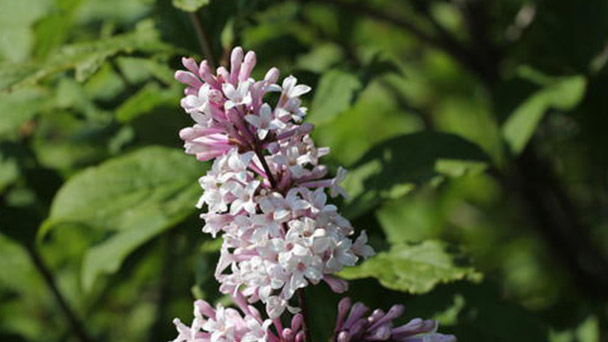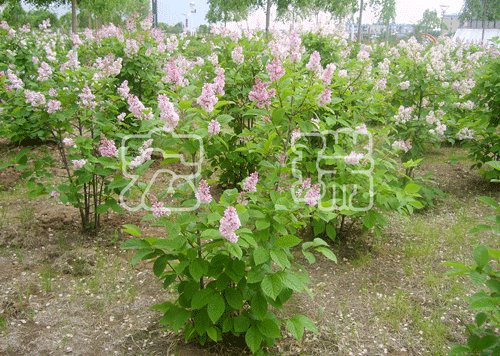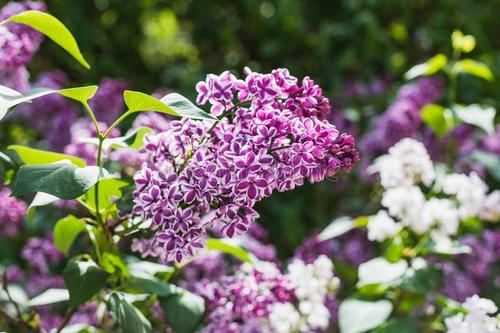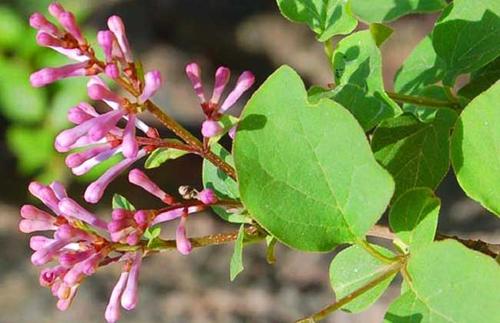Syringa Villosa Profile
Written by Maggie
Dec 03 2021

Syringa Villosa, also called villous lilac, is a plant of the genus Syringa in the family Luteoceros.
Syringa Villosa picture

Morphological characteristics of Syringa Villosa
Syringa Villosa is a shrub, up to 4 m tall. Branches are erect, stout, grayish brown, lenticellata, branchlets grayish brown, glabrous or puberulent, lenticellata. Flowering period of syringa villosa is from May to June and fruiting period is from September.
Inflorescences are erect, branching from terminal bud, oblong or tower, ca. 13 cm long, ca. 10 cm wide, rachis and pedicels, calyx glabrous, or puberulent, pubescent, or pilose, rachis lenticellata, pedicels ca. 1.5 mm, aromatic.
Syringa Villosa calyx is around 4 mm long, calyx teeth sharp pointed or obtuse, corolla lavender red and pink to white, corolla tube thin, thin coarser up to 3 mm, nearly cylindrical, 0.7 cm long, lobes mature or square to the outside, ovate or elliptic, oblong-elliptic around 5 mm long, apex curved in a pocket and beaked.
Syringa Villosa distribution
Syringa Villosa is mainly distributed in Hebei and Shanxi provinces of China. It grows in hillsides, thickets, ditches, rivers and other places at an altitude of 1200-2200 meters.

The growing method of Syringa Villosa
Syringa Villosa is originally grown on hillsides in jungles, near streams, near water, etc., at altitudes above 900 m. They like sunny, warm places, but can tolerate a little shade.
Although Syringa Villosa has a little shade tolerance, if it is kept in a place with more shadows for a long time, the growth of Syringa Villosa will be weak and the flowering will be less. Therefore, it should be kept in a place where the sun can shine and the drainage is good.
Just after planting Syringa Villosa, water it every ten days. After each watering, loosen the soil for Syringa Villosa to ensure its growth. In North China, the best time for Syringa Villosa to grow is from April to June, when you should water it thoroughly two or three times a month.
If it has grown into three or four years of seedlings, we should pay attention to pruning, can be directly above the ground 30cm position cut off, so that the next year flowers can open better, in the spring, to cut off the weak, dry branches, so that the rest can grow better.
Main values of Syringa Villosa
Syringa Villosa's inflorescences are arranged in neat order, and its flowers and colors are elegant, and its overall appearance and shape are beautiful, so its ornamental value is very strong. Syringa Villosa is also resilient and adaptable enough to be grown artificially.
The garden value of Syringa Villosa is very high. Syringa Villosa is generally planted on lawns or on the roadside as a setting, and can also be transplanted and cultivated.
Syringa Villosa has excellent flower type and color, so it is not only suitable for common pot culture, but also a very good cut flower material. It can be used as the preferred material for cut flowers as a bottle insertion, making it a very interesting ornamental artwork.
Syringa Villosa grows strongly with lush branches and leaves, and is resistant to air pollution, sulfur dioxide, hydrogen fluoride and other gases, so it is often planted in lawns as a green tree.

Latest Updated
- Benefits of Bugleweed - 7 Science-backed Health Benefits
- Bugleweed Dangers & Side Effects - Is It Poisonous?
- How to Plant Evergreen Trees - What You Should Know
- When to Plant Evergreens - Grow Guide for Evergreen Trees
- 12 Wonderful Evergreen Shrubs for Your Garden
- 12 Popular Evergreen Plants with Pictures for Beginners
- When And How To Prune A Lilac Bush Like a Pro
- How to Grow & Care for Lilac Vine (Hardenbergia Violacea)
- Japanese Lilac Tree (Syringa Reticulata) Care & Propagation Guide
- Shumard Oak Pros and Cons - What to Know
Popular Articles
- Winter maintenance of Antirrhinum Majus
- How to Grow Terminalia Mantaly Tree
- How to Grow and Care for Crossostephium Chinense
- How to grow Antirrhinum Majus in spring
- Peristeria Elata (Dove Orchid) Profile: Info & Care Guide
- Underwatered Snake Plant (Sansevieria Trifasciata) - Signs And How To Fix
- How to Care for Brazilian Jasmine Plant (Mandevilla Sanderi)
- How to Grow & Care for Graptopetalum Purple Delight in Summer
- Rosa Chinensis (China Rose): Plant Growing & Care Tips
- How to Care for Baby Sun Rose (Aptenia Cordifolia)